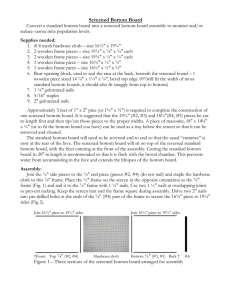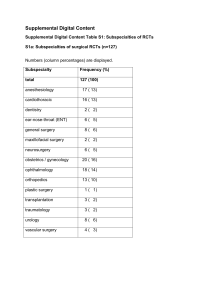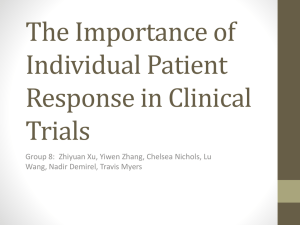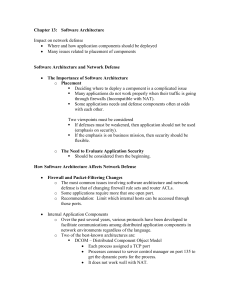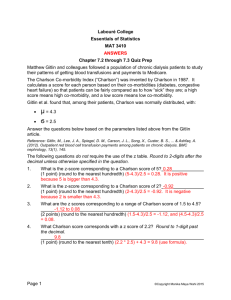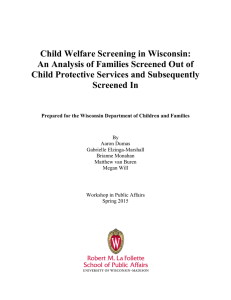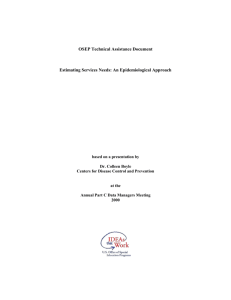Online Appendix
advertisement
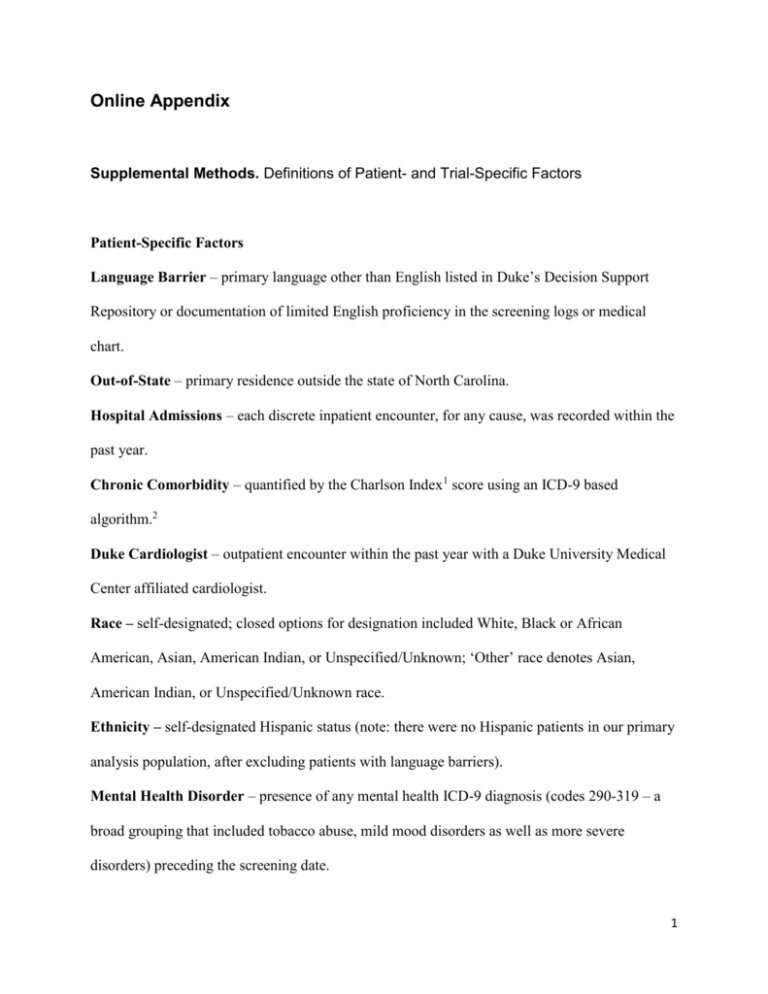
Online Appendix Supplemental Methods. Definitions of Patient- and Trial-Specific Factors Patient-Specific Factors Language Barrier – primary language other than English listed in Duke’s Decision Support Repository or documentation of limited English proficiency in the screening logs or medical chart. Out-of-State – primary residence outside the state of North Carolina. Hospital Admissions – each discrete inpatient encounter, for any cause, was recorded within the past year. Chronic Comorbidity – quantified by the Charlson Index1 score using an ICD-9 based algorithm.2 Duke Cardiologist – outpatient encounter within the past year with a Duke University Medical Center affiliated cardiologist. Race – self-designated; closed options for designation included White, Black or African American, Asian, American Indian, or Unspecified/Unknown; ‘Other’ race denotes Asian, American Indian, or Unspecified/Unknown race. Ethnicity – self-designated Hispanic status (note: there were no Hispanic patients in our primary analysis population, after excluding patients with language barriers). Mental Health Disorder – presence of any mental health ICD-9 diagnosis (codes 290-319 – a broad grouping that included tobacco abuse, mild mood disorders as well as more severe disorders) preceding the screening date. 1 Religious Affiliation – patient self-report of an affiliation with an organized religion. Rural versus Urban – extracted by linking patient zip codes to Rural-Urban Commuting Area (RUCA) codes, a detailed and flexible scheme based on the size and direction of primary commuting flows from Census 2000.3 We aggregated RUCA codes by the two-category “Categorization C”: urban (1.0, 1.1, 2.0, 2.1, 3.0, 4.1, 5.1, 7.1, 8.1, and 10.1) and rural (4.0, 4.2, 5.0, 5.2, 6.0, 6.1, 7.0, 7.2, 7.3, 7.4, 8.0, 8.2, 8.3, 8.4, 9.0, 9.1, 9.2, 10.0, 10.2, 10.3, 10.4, 10.5, and 10.6). Trial-Specific Factors Most patients (79%) were screened for a single trial, in which case, trial specific factors were linked to a patient based on the characteristics associated with the trial for which they were screened. If a patient was screened for multiple trials, then a trial specific factor was defined as being present if any of the screened trials had the given characteristic. Intensive Trial-Related Testing – cardiac magnetic resonance imaging, retinal examinations requiring extended study visits, or peak oxygen uptake measurement during exercise. Trial Length – longer trial length was defined as anticipated trial participation >6 months for an individual patient. Trial Sponsorship – categorized as industry or government according to the primary source of funding for the trial. Trial Size – smaller trial size was defined as a total trial population of <1000 subjects. Total Compensation – lower total compensation was defined as less than $20 of total compensation to a patient for trial participation. 2 References 1. Charlson ME, Pompei P, Ales KL, MacKenzie CR. A new method of classifying prognostic comorbidity in longitudinal studies: development and validation. J Chronic Dis 1987;40(5):373383. 2. Quan H, Sundararajan V, Halfon P, et al. Coding algorithms for defining comorbidities in ICD-9-CM and ICD-10 administrative data. Med Care 2005;43(11):1130-1139. 3. Rural Health Research Center. Rural-Urban Commuting Area Codes. Available at: http://depts.washington.edu/uwruca/index.php. Accessed June 25, 2012. Supplemental Results. Interaction and Subgroup Analyses In interaction and subgroup analyses of our multivariable analysis, interaction testing between age and trial length was statistically significant (P=.048). Trial length was a stronger correlate of not participating in subjects <65 years old (relative risk, 5.90; 95% CI, 2.94-11.85; n=364) compared with subjects ≥65 years old (relative risk, 3.00; 95% CI, 1.60-5.62; n=291). Interaction between sex and intensive trial testing was also statistically significant (P=.016). Intensive trial testing was more strongly associated with not participating in men (relative risk, 2.18; 95% CI, 1.78-2.67; n=428) compared with women (relative risk, 1.56; 95% CI 1.28-1.90; n=227). There were no other significant interactions between age, sex, trial length, and involvement of intensive trial-related testing. In subgroup analyses of reasons for not participating in a trial, 24 of 29 patients (82.8%) who cited travel barriers were considered for lengthier trials (anticipated duration of participation >6 months). Five of the 6 patients (83.3%) who cited transportation as a primary barrier were elderly (≥65 years old). Altered mental status (dementia or delirium) was the third most 3 common reason in both women (13.0%) and the elderly (≥65 years old) (9.6%). In elderly women, altered mental status was the primary reason for exclusion in 15.9% of individuals, approximately double the rate in the overall study population. 4 Appendix Figure 1. Sensitivity Analysis of Patients Who Did Not Have a Barrier Perceived by the Trial Team The multivariable model included all of the factors in the forest plot. Factors are ordered from top to bottom by highest to lowest chisquare. Relative risks and 95% confidence intervals are presented. The analysis included 529 patients after excluding those patients from our primary analysis sample who had barriers to participation perceived by the trial team after reviewing the medical chart, speaking with the clinical providers, or interviewing the patient or family (altered mental status, clinical instability, nonadherence, substance abuse, provider declined). 5 Appendix Figure 2. Sensitivity Analysis of Patients Who Were Screened for a Single Trial The multivariable model included all of the factors in the forest plot. Factors are ordered from top to bottom by highest to lowest chisquare. Relative risks and 95% confidence intervals are presented. The analysis included 516 patients after excluding those patients from our primary analysis sample who were screened for multiple trials and was aimed at assessing whether our results were dependent on the coding scheme used for patients who were screened for multiple trials. 6

